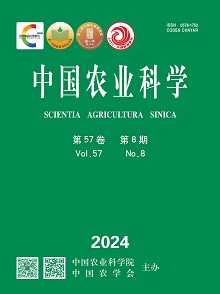【Objective】The objective of this study is to investigate the differences in morphological and physiological responses of root growth of drip irrigated spring wheat with different drought sensitivity to stage drought stress, to further elaborate the physiological mechanisms of drought resistance and water conservation in drip irrigated spring wheat in Xinjiang, and to provide a theoretical basis for further water-saving and high-yield in Xinjiang wheat region. 【Method】 From 2021-2022, the strong drought resistance variety Xinchun 6 and the weak drought resistance variety Xinchun 22 were used as the test materials by using the soil column cultivation method. Mild (T1 and T3, 60%-65% FC, FC is the field capacity) and moderate (T2 and T4, 45%-50% FC) drought stress treatments were conducted during the tillering and jointing stages, with conventional irrigation as the control (CK, 75%-80% FC), the effects of pre-reproductive drought stress on root morphological characteristics (root length density (RLD), root volume density (RVD)), antioxidant system (malondialdehyde (MDA), superoxide dismutase (SOD), peroxidase (POD)), osmoregulation substance (proline (Pro), soluble sugars (SS)) and spatial and temporal characteristics of root activity were studied. The compensatory effect of drip irrigated spring wheat root growth on drought-rehydration was analyzed.【Result】RLD and RVD showed a trend of increasing and then decreasing with increasing drought stress, and under mild drought (T1 and T3) conditions, RLD and RVD in the 20-60 cm soil layer were significantly increased. The MDA content in the root of each soil layer showed an upward trend with the intensification of stress, while SOD, POD, Pro, and SS all increased first and then decreased with the intensification of drought, and gradually increased with the deepening of the soil layer. After rehydration of T1 treatment, root morphological characteristics, antioxidant enzyme activity, osmotic substances and root activity all reached the maximum value, which in turn increased the yield by 2.77% to 19.58% compared to the rest of the treatments. Stepwise regression analysis showed that RVD and SS were important determinants of yield, RLD, SOD and SS were the most significant indicators of Xinchun 6 drought resistance; RLD, MDA and POD were the most significant indicators of Xinchun 22 drought resistance.【Conclusion】Spring wheat maintains 60%-65% FC during the tillering and jointing stages, after drip irrigation and rehydration, it increases the distribution proportion of roots in the 20-60 cm soil layer, enhances the root system’s ability to remove reactive oxygen species and osmotic adjustment, delays root senescence and improves root physiological characteristics, thus increasing yield.











